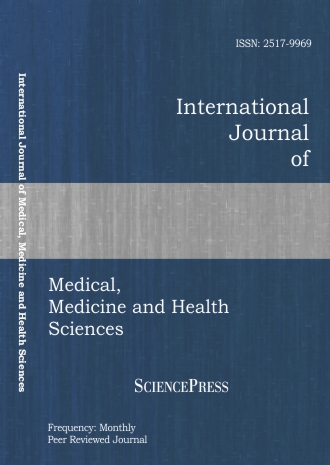
Scholarly
Volume:8, Issue: 11, 2014 Page No: 815 - 818
International Journal of Medical, Medicine and Health Sciences
ISSN: 2517-9969
Low Molecular Weight Heparin during Pregnancy
The objective of this study is to analyze the
prophylactic usage of low molecular weight heparin (LMWH) along
pregnancy and the correlation between their usage and month/week
of pregnancy, in the Department of Gynecology and Obstetrics, at
Clinical Hospital in Tetovo. A retrospective study was undertaken
during 01 January – 31 December 2012. Over of one year, the total
number of patients was 4636. Among the 1447 (32.21%) pregnant
women, 298 (20.59%) of them were prescribed LMWH. The majority
of patients given LMWH, 119 (39.93%) were diagnosed
hypercoagulable. The age group with the highest attendance was 25-
35, 141 patients (47.32%). For 195 (65.44%) patients, this was their
first pregnancy. Earliest stage of using LMWH was the second month
of pregnancy 4 (1.34%) cases. The most common patients were 70
women along the seventh month (23.49%), followed by 68 in the
ninth month of pregnancy (22.81%). Women in the 28th gestational
week, were found to be the most affected, a total of 55 (78.57%) were
in that week. Clexane 2000 and Fraxiparine 0.3 were the most
common for which low molecular weight heparin was prescribed.
The number of patients which received Clexane 2000 was 84
(28.19%), followed by those with Fraxiparine 0.3 81 (27.18%). The
administration of LMWH is associated with long hospitalization
(median 14,6 days).